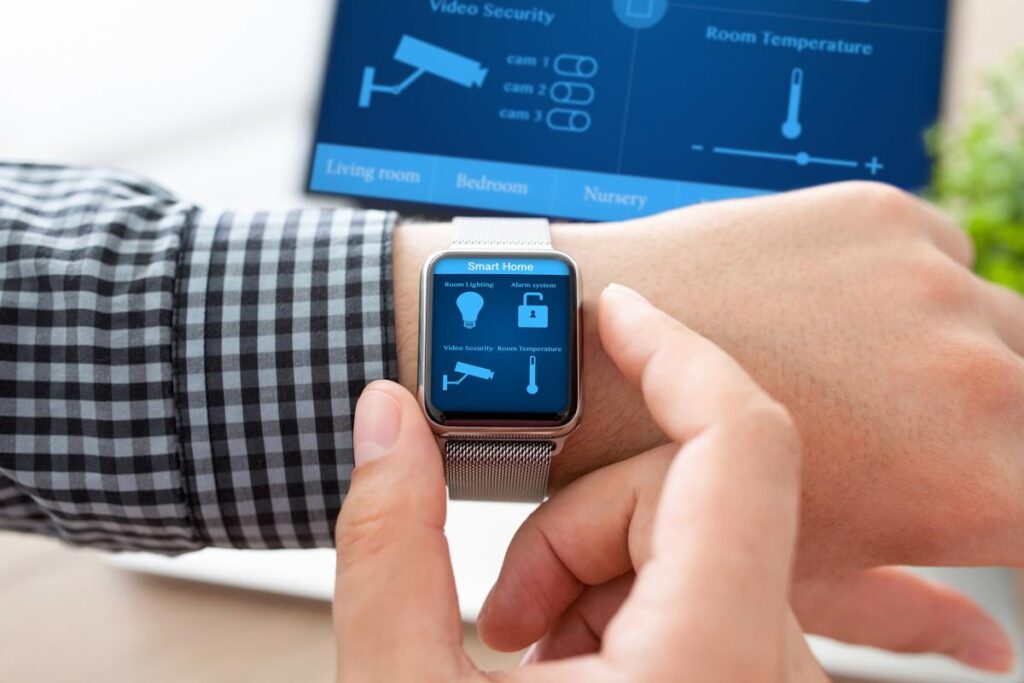CableLabs Unveils A New Approach Towards IoT Security

Fitness wearables, Echo, Nest, smart refrigerators. Chances are, many Americans have at least one of these in their homes. The Internet of Things has exploded in the last few years as innovators and internet service providers have come out with devices and ultra-fast internet speeds to improve the lives of consumers by making their to-do tasks at home, and at work, more convenient and efficient. And the surge is far from over. According to technology forecasts, the number of IoT devices globally is expected to reach 22 billion by 2025, which comes to about three devices per person—triple the
Why Do We Need 10G?

"If we want to bring these innovations into the homes of our customers—things like virtual reality, connected health, connected education … the Star Trek Holodeck … the list goes on … then it's going to take a 10G network to deliver it," said Cox Communications President Pat Esser during a panel at CES last month. Esser's remarks were among the highlights of an event unveiling of the cable industry’s 10G initiative, which will bring 10 gigabit speeds to consumer homes around the world in the coming years. CES is one of the largest technology events in the world where innovators, device
IoT Has Quietly and Quickly Changed Our Lives

It’s pretty clear now—Americans love the Internet of Things (IoT). Connected devices are finding their way into more aspects of our daily lives, and that has a big impact on the digital landscape. In fact, according to Parks Associates, 71 percent of U.S. broadband households own a connected entertainment device. Combine that with the fact that streaming video made up 76 percent of all consumer internet traffic in 2017, and it’s clear how large of an impact IoT already has on the internet ecosystem. And it’s only going to grow, and quickly. In the next few years, analysts expect IoT to be the
America is Now a Gigabit Nation

Fast and reliable internet connectivity has never been as powerful or widespread as it is today. In 2019, the majority of U.S. households—80 percent—can now receive gigabit service from their cable internet provider. That's over 40 states that have gigabit offerings in both urban and rural communities, up from just five percent in 2016. The rate of availability for gigabit speeds has increased significantly, and that's especially important given the demands of consumers today for networks that can deliver advanced technology such as virtual reality, augmented reality, artificial intelligence
The 10 Gigabit Network of the Future

By Michael Powell Imagination is the source of innovation. It drives us to push past present limitations and to think anew about what the world can be. With regard to internet service, while it's difficult to predict the specific ways that we will connect and communicate digitally in the next decade, it's also evident that consumer demands on networks will grow, offering new challenges but also exciting new possibilities. For that reason, while the cable industry remains focused on executing to meet the needs of customers today, it also devotes significant energy to thinking ahead about the
CableLabs Gives a Sneak Peek of the Innovation Trends to Look for in 2019

2019 is here, and it’s exciting to think about what new technology and media experiences might be in store for everyone in the next 12 months. It's also almost time for CES—the Consumer Electronics Show—which kicks off next week and where emerging technology trends, devices and gadgets make their debut. CableLabs also just released their latest tech predictions video, many of which will dominate the CES showfloor and transform a wide range of sectors in the coming months. Let's take a look at the latest innovations highlighted in their video that are due to make a huge impact on the industry
What Do Americans Value the Most in Their Internet Service?

It's the first week of 2019 and the perfect time to assess people's priorities when it comes to the state of internet connectivity in their homes. Given that 2018 saw lots of progress and strides in broadband adoption and expansion, it's more important than ever to evaluate what users are looking for in a broadband connection, and how America's broadband providers are meeting their digital needs. In a poll conducted by Morning Consult last month, the majority of people—62 percent—are receiving their internet service from a cable broadband provider. Most broadband internet users—69 percent
Video Leads All Internet Traffic

With internet speeds getting faster every year, and more connected devices populating homes, people are online more than ever before. America’s broadband providers have invested over $275 billion in the past 20 years to upgrade and expand their networks—which has allowed people to experience next generation technologies like AR and VR, and to unleash limitless possibilities for Americans to explore in areas like education, healthcare, business, entertainment, and beyond. Moreover, what’s particularly fascinating is the incredible opportunity that this investment has opened for video. It’s
How Does a Fixed Wireless Network…Work?

Diverse geography and terrain, coupled with the sheer size of the United States pose significant challenges to delivering high-speed internet to every corner of our country. In places where miles of wilderness and farmland separate neighbors, the challenges to deploying a fiber network can be prohibitive. However, two ISPs are finding new solutions to connect even the most remote Americans. Recently, Midco and Charter have begun investing in fixed wireless technology to reach consumers. Midco began offering its customers a fixed wireless service earlier this year through its acquisition of
Charging Into the Gigabit Future

Five years ago, the notion that much of America would have access to blazing fast gigabit internet service seemed like a fantasy. In fact, only four percent of U.S. homes had access to gigabit speeds at the end of 2016. But in just 18 months, cable operators across the country have increased gigabit availability by almost 16 times. Today, fantasy has turned into reality as cable's internet networks are now offering gig speeds in more than 40 states, in both urban and rural communities. A new white paper from CableLabs®—the industry's R&D consortium—highlights this tremendous gigabit feat and
